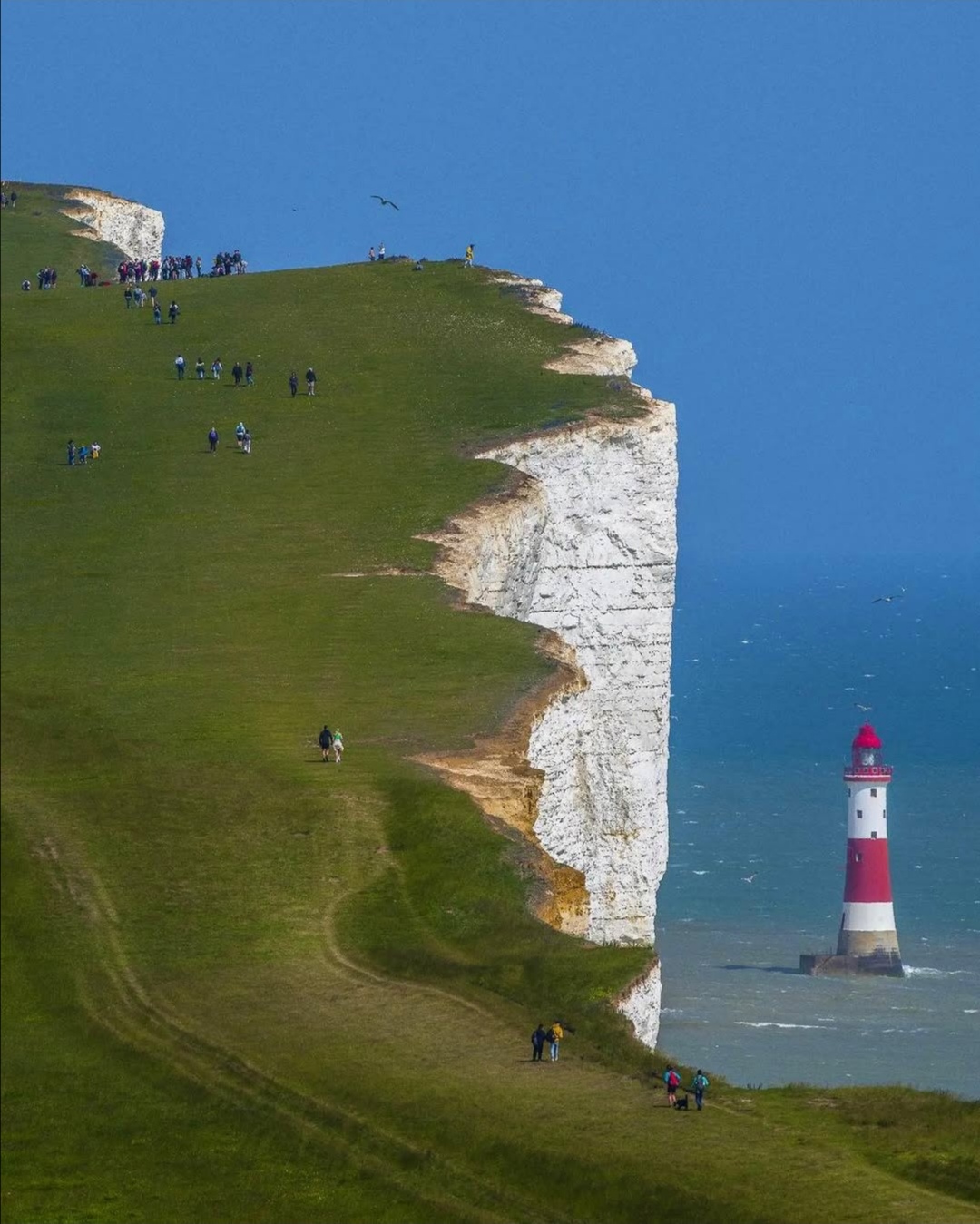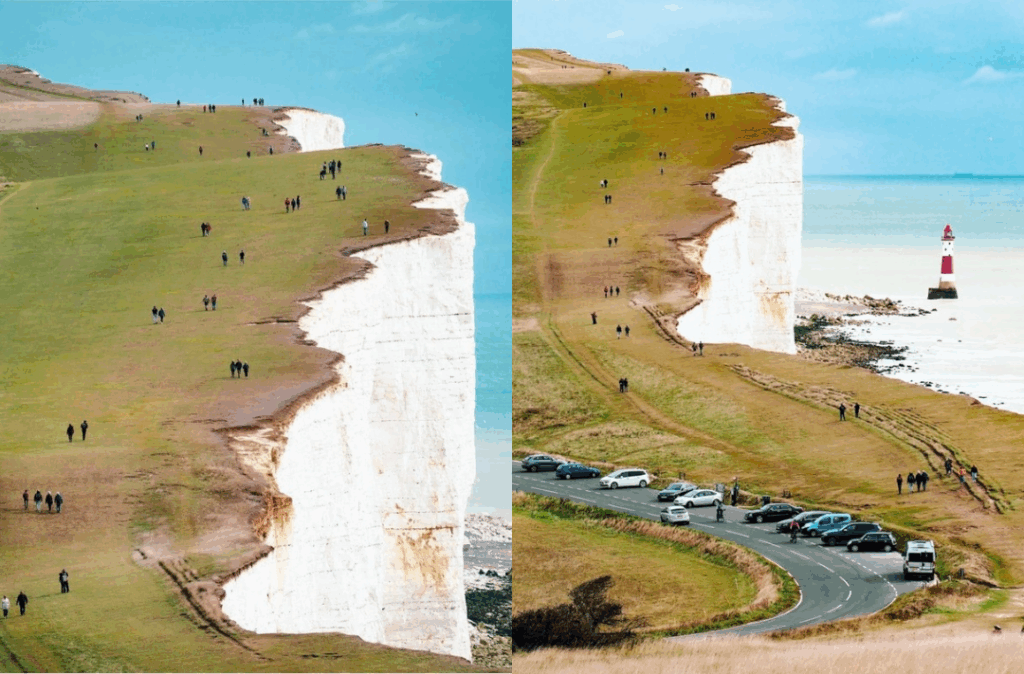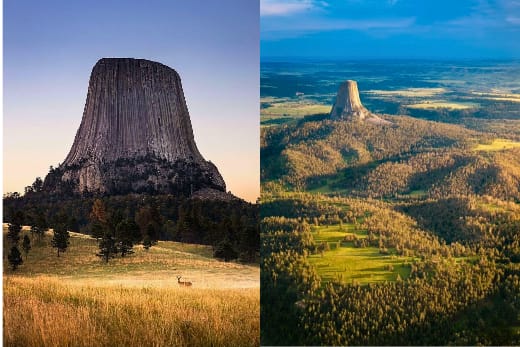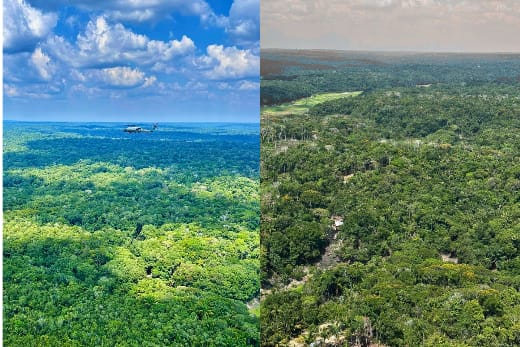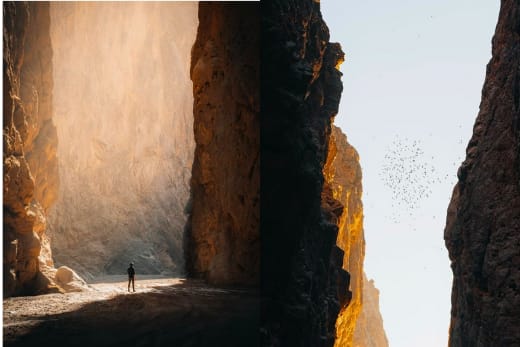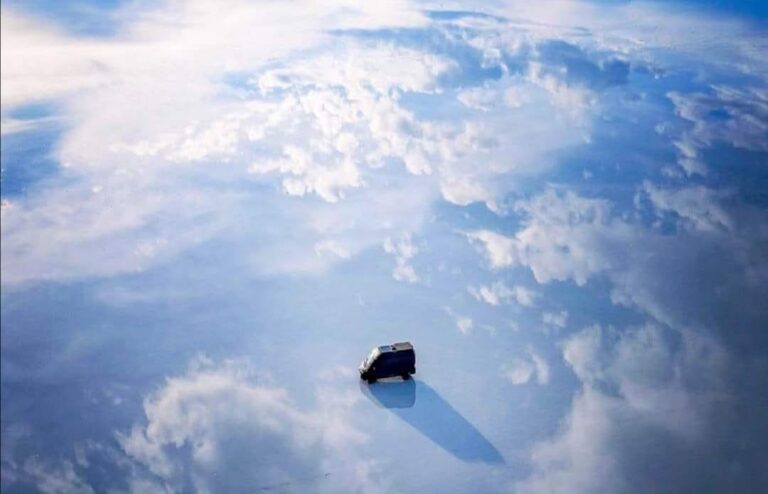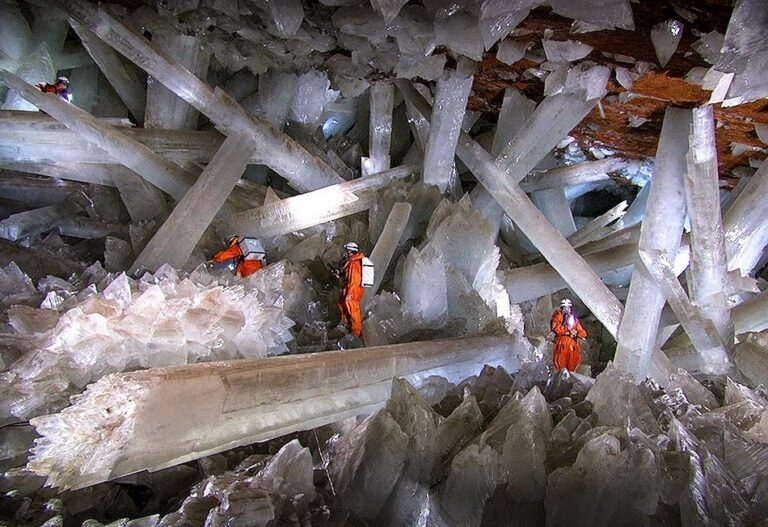The Seven Sisters Cliffs in East Sussex, England, are one of the country’s most breathtaking natural landmarks.
These striking white chalk cliffs, formed around 70 million years ago, stand tall along the English Channel, offering dramatic views and a powerful sense of nature’s raw beauty.
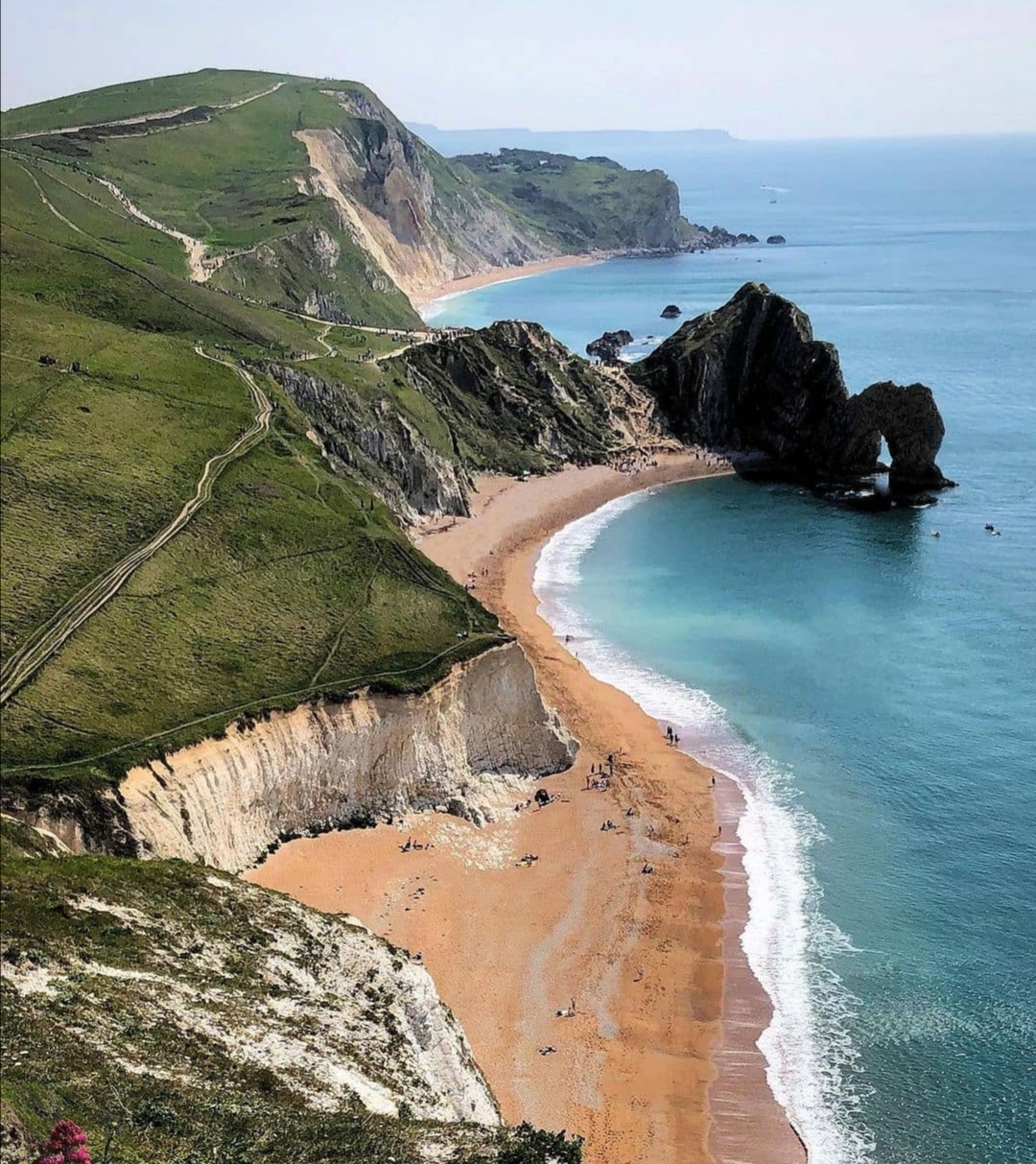
Unlike many other tourist spots, the cliffs remain mostly untouched by development, giving visitors a rare and refreshing experience. Their brilliant white faces are constantly shaped by sea erosion, creating sharp, clean edges that are both beautiful and dangerous.
The contrast between the green rolling hills and the sheer white drop into the blue sea is what makes this place so unforgettable.
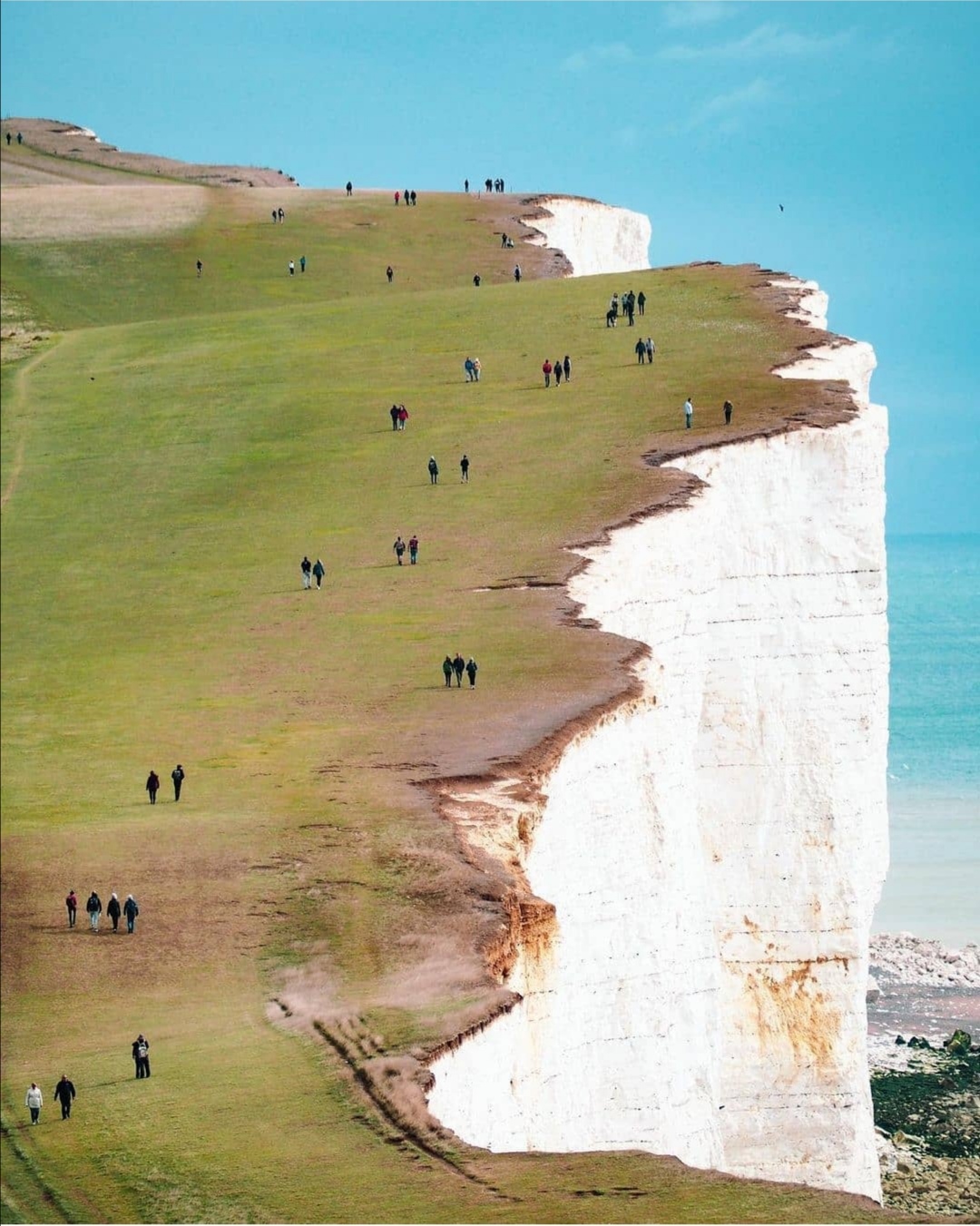
This area is part of the South Downs National Park and is a favorite for hikers, photographers, and filmmakers. Walking along the grassy cliff tops, you feel as though you’re on the edge of the world.
“The Seven Sisters are a textbook example of active coastal erosion. They’re not just beautiful — they’re geologically alive,” says Dr. Emily Carter, a coastal geologist at the University of Sussex.
But despite the peaceful views, the cliffs are constantly changing — chunks of chalk fall away over time, and visitors are warned to stay clear of the edges.
As nature photographer Daniel Reeves puts it, “There’s no place like it in the UK. Every time you visit, the cliffs have subtly changed — it’s like watching a living painting.”
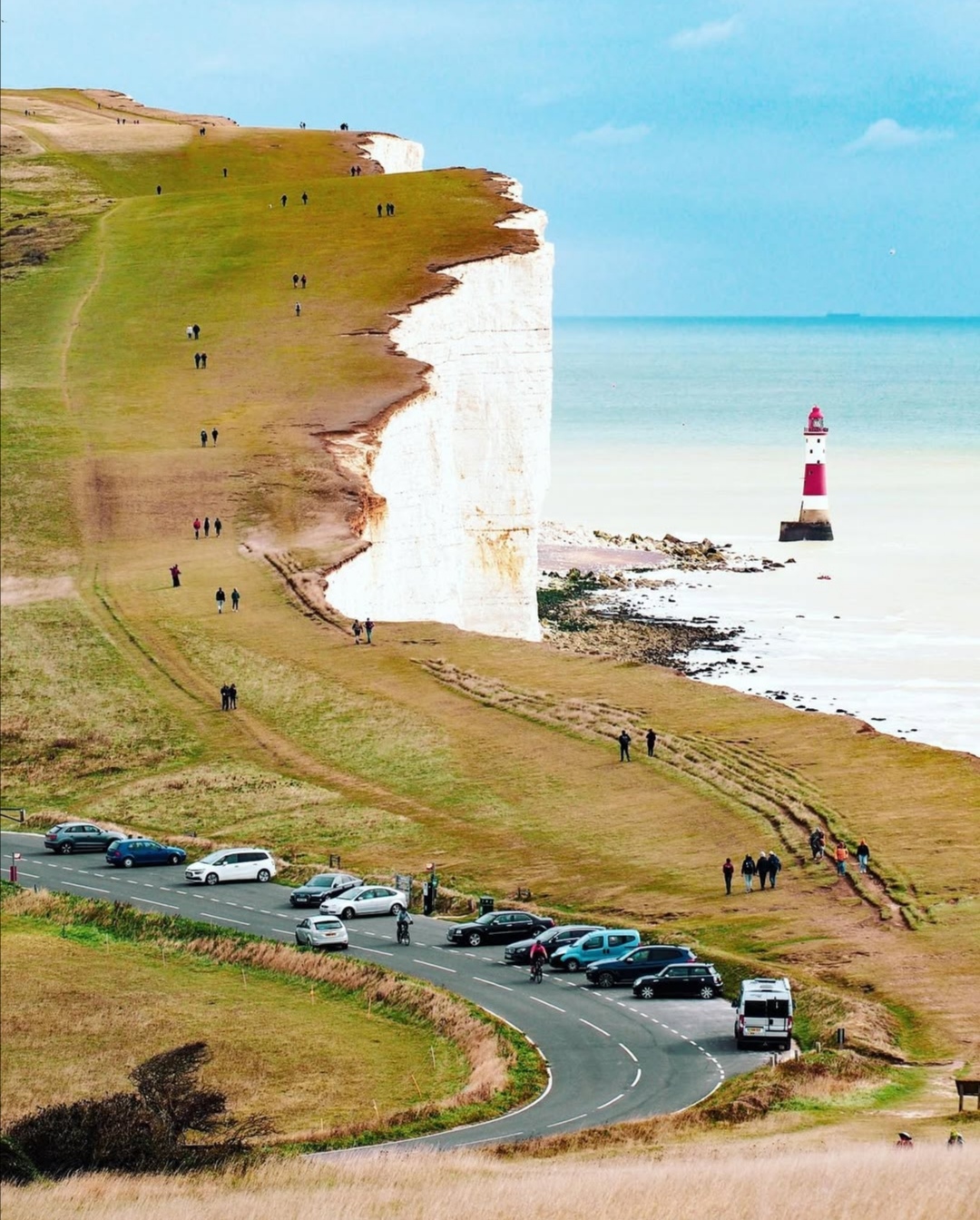
The Seven Sisters have also made appearances in several films, often standing in for the more well-known White Cliffs of Dover.
